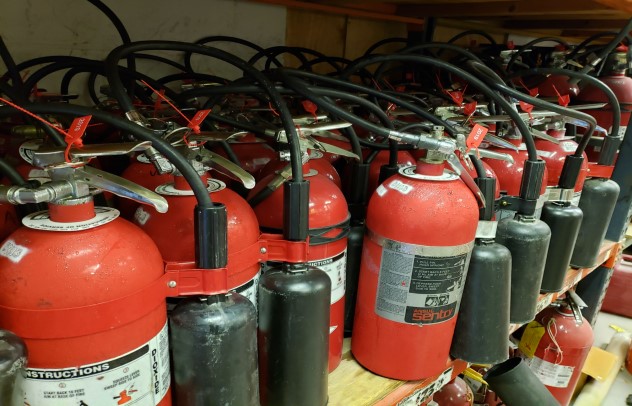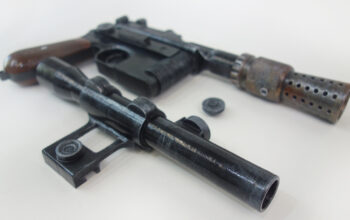According to the report published by the U.S. Fire Administration, there were around 1.3 million fires in 2017. That means that every minute at least 2 fires start somewhere across the country. Fortunately, not every fire ends with a full-scale disaster that brings injuries and catastrophic property damage. If the response to ignition is rapid and timely, the majority of fires can be cut out at the very beginning. The first line of defense from the blaze is various extinguishers and portable fire extinguishers in particular. Generally, more than 60% of fires in the US are put out without notifying fire departments equipped with firetrucks.
Most of the time fires happen spontaneously, therefore, it’s your duty to be prepared in advance. An integral part of outstanding fire safety is proper extinguishing hardware. CO2 fire extinguishers are one of the most popular extinguishing tools around the globe. Let’s take a close look at them.
How Do CO2 Fire Extinguishers Work?
The CO2 fire extinguisher was invented back in 1924 by the Walter Kiddie Company. It was designed in response to a telephone company’s request for an electrically non-conducive fire extinguisher which would help to fight fires inside telephone switch boxes. Since then, the CO2 fire extinguisher gained great popularity in various industries; they even stand anti-fire guard on the International Space Station. CO2 fire extinguishers are easy to operate – all you need is to unfold the horn, squeeze the handle, and point the nozzle in the direction of a burning object. The best tactic is to aim directly at the foundation of fire. Be advised that due to the high internal pressure of the extinguisher, the gas sprays out rapidly and, therefore, may move the burning object.
In the core of this extinguisher lies carbon dioxide under extreme pressure. Due to the physical properties of CO2 under such pressure, it turns into liquid. Yet once it is expelled out of the extinguisher, carbon dioxide turns back into gas since it can’t exist as a liquid under atmospheric pressure. This feature makes CO2 fire extinguisher work without any additional chemical agents or expulsion mechanisms.
In a nutshell, CO2 fire extinguisher works by consuming oxygen, suffocating blaze and therefore eliminating the fire. Dispenced molecules of carbon dioxide gas displace oxygen molecules to cuts off one of three crucial elements of the fire triangle (heat, fuel, oxygen). Besides, the gas is very cold which also affects the heating component and eventually helps to tame the fire.
What Kind Of Fires CO2 Fire Extinguishers Can Be Used On?
CO2 fire extinguishers are a perfect tool when it comes to fighting a fire that occurred around electric hardware. Its non-conductive feature helps prevent short circuits making extinguishing process much safer and efficient. In addition, unlike other types of extinguishers such as foam or dry chemical ones, carbon dioxide extinguishers cause much less damage to electronics.
Despite the fact that carbon dioxide fire extinguishers were originally designed to put out electrical fires they also have a reputation of being good at fighting fires of flammable liquids. Even more, CO2 fire extinguishers are often used to subdue fire caught on people. That’s why this kind of firefighting device is popular in television and filmmaking industry
In conclusion, CO2 fire extinguishers are only suited to fight class B and C fires. It’s also important to understand that trying to put out any other fire with this extinguisher may not be pointless but also harmful. Dut to the high pressure and fast speed of gas releasing it can disperse burning particles such as ash or charcoal and, therefore, spread the flame to other surfaces.
Precautions When Using CO2 Fire Extinguishers
CO2 fire extinguishers are not toxic, however, its crucial to take it into account that carbon dioxide’s main property is the ability to replace oxygen. Thus, using them in closed-off areas may lead to decreasing amounts of breathable air and inflict the risk of suffocating. Always remember that fire needs air to exist and so do you. Besides, low temperatures of the gas pose a hazard to people, too. Prolonged contact with the hose and nozzle while operating the extinguisher may result in frostbite.
Carbon dioxide fire extinguishers can come in handy almost everywhere: at warehouses, laboratories, storage areas, or even kitchens. With proper knowledge of how to use the CO2 fire extinguisher, this tool will guard your life and property in case of unfortunate events and will make you rest assured of your safety.
Related Posts












